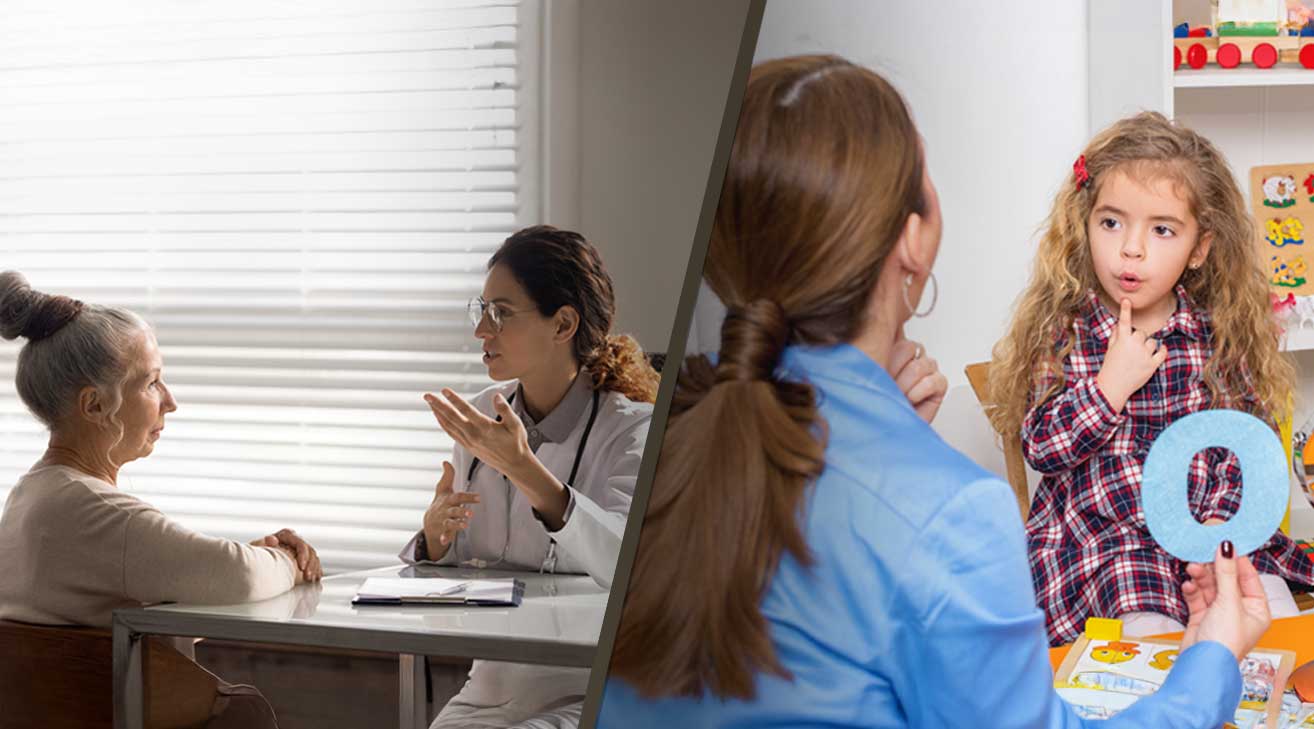Autism and Speech Therapy: Strategies for Children & Adults
Autism spectrum disorder (ASD) affects communication, behavior, and social interaction. For individuals with autism—whether children or adults—speech and language development can vary widely. Some may be nonverbal, while others have advanced vocabulary but struggle with social communication or processing.
Speech therapy for autism is one of the most effective interventions to help individuals develop essential communication skills. This article explores how speech-language pathologists (SLPs) support both children and adults on the autism spectrum, with strategies tailored to each age group.
How Autism Affects Communication
Autism is a spectrum, meaning symptoms and challenges can range from mild to severe. While not every person with autism has a language disorder, many experience difficulties with:
These communication differences often appear early in childhood, but they can persist—or even emerge—into adulthood if not addressed.
Speech Therapy for Children with Autism
Early intervention is vital in helping children with autism develop language and communication skills. The brain is most receptive to learning in the first five years of life, making early support essential.
Goals of Therapy in Children
Effective Strategies
- Visual Supports
Picture cards, schedules, and visual cues help children understand routines, transitions, and communication expectations. - Play-Based Therapy
Using games and toys makes therapy engaging while helping children practice conversation, turn-taking, and social cues. - AAC (Augmentative and Alternative Communication)
For nonverbal or minimally verbal children, tools like speech-generating devices or PECS (Picture Exchange Communication System) can empower communication. - Modeling and Repetition
Therapists model words or actions and encourage repetition to reinforce learning. - Parent Coaching
Parents learn techniques to use at home, turning everyday moments into learning opportunities.
Learn more about early pediatric services:
TPI Pediatric Speech Therapy
Speech Therapy for Adults with Autism
For adults on the spectrum, speech therapy can focus on building independence, employment readiness, and improving interpersonal relationships.
Goals of Therapy in Adults
Effective Strategies
- Social Stories and Role-Play
Adults practice real-life scenarios like job interviews, phone calls, or group conversations to gain confidence and skill. - Pragmatic Language Training
Focuses on the nuances of conversation—tone, sarcasm, staying on topic, and reading body language. - Cognitive-Behavioral Techniques
Helps adults navigate emotional regulation and communication challenges more effectively. - Executive Function Support
Therapy may include organizational skills, memory, and time management that tie into effective communication. - Technology-Assisted Tools
Apps, speech devices, and video modeling can support learning and independence.
Differences Between Child and Adult Approaches
|
AREA |
CHILDREN |
ADULTS |
|---|---|---|
|
Focus |
Language development, social learning |
Social-pragmatic use, real-world function |
|
Methods |
Play, visuals, parent involvement |
Role-play, discussion, functional scenarios |
|
Goals |
Improve basic communication |
Enhance independence and life skills |
|
Environment |
Home, school-based therapy |
Workplace, community, or virtual settings |
How Speech Therapy Benefits the Autism Community
Whether working with a toddler just learning to speak or an adult navigating social situations at work, speech therapy for autism helps individuals:
Therapy is always personalized, and progress looks different for everyone. What matters most is that communication—whether spoken, signed, typed, or gestured—is made possible and meaningful.
The Role of Family and Caregivers
Support at home and in the community is crucial. SLPs often involve family members in therapy plans, showing them how to use visual aids, cueing strategies, and communication techniques throughout daily life.
Consistency across home, school, and therapy environments significantly improves progress.
When to Seek Help
Children:
If a child with autism is not using language appropriately for their age—or not communicating at all—parents should consult a pediatric SLP as early as possible.
Adults:
If communication challenges are affecting daily living, employment, or mental health, speech therapy can make a major difference—even later in life.
Autism impacts how individuals communicate and engage with others, but with the right support, those challenges don’t have to limit a person’s potential. Speech therapy for autism provides children and adults with valuable strategies to express themselves, understand others, and engage in their communities with confidence.
Whether you’re a parent, caregiver, educator, or someone navigating autism yourself, know that help is available—and progress is always possible.
Learn more about services for all ages:
Explore TPI Therapy
Speech Therapy for Children







